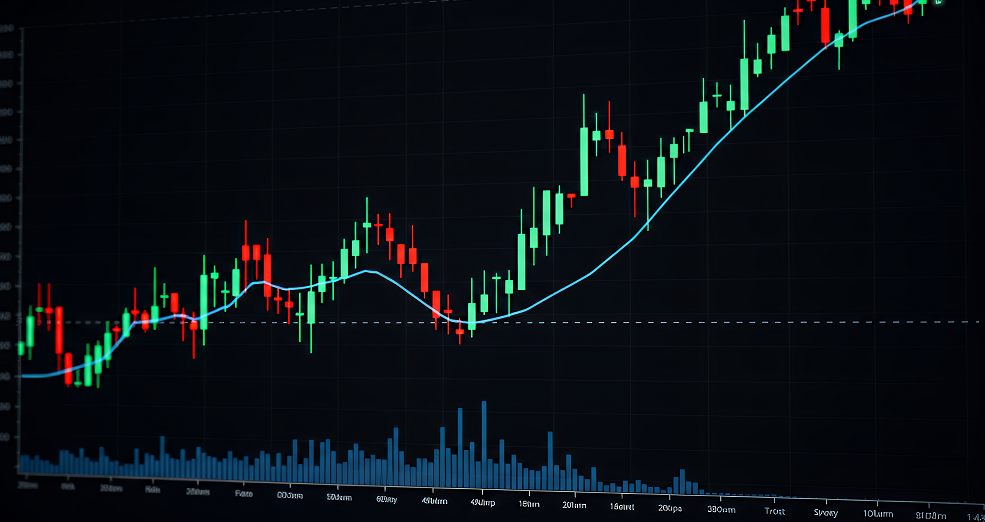IC Markets Asia Fundamental Forecast | 25 August 2025
What happened in the U.S session?
The latest overnight U.S. session saw major financial news and macroeconomic data releases centered on a surprisingly dovish speech from Fed Chair Jerome Powell at Jackson Hole and fresh labor and economic numbers, which drove a notable broad rally in U.S. stock indices while pressuring the dollar and other rate-sensitive instruments. The session was defined by a rally in equities, dollar weakness, higher yields, and a modest boost in precious metals, triggered by dovish Fed signals and mixed macro data releases.
What does it mean for the Asia sessions?
Asian traders should watch for a positive start to the week on Monday, 25th August 2025, as regional equities are likely to follow Wall Street higher after signals that the US Federal Reserve may resume rate cuts soon. Key developments include continued volatility in tech stocks, major central bank speeches, and important macroeconomic releases from Japan, Australia, Singapore, and China. Asian traders should maintain a watchful stance on rate policy headlines, tech stock movements, and regional macro releases throughout the week, as these factors will shape sentiment and trade opportunities.
The Dollar Index (DXY)
Key news events today
New Home Sales (2:00 pm GMT)
What can we expect from DXY today?
The Dollar is experiencing short-term technical pressure, but overall remains steady across most major pairs. Today’s economic calendar does not anticipate major volatility drivers for the dollar, so movements are expected to reflect technical trading and broader market sentiment. The US Dollar Index (DXY) was stable around 98.25 as of last week, showing little change.
The broader US financial markets saw a mild pullback last week following tepid tech stock performance and anticipation of Fed communications, but this did not meaningfully disrupt dollar stability. Interest rate expectations and economic calendar events for August 25 may further impact the dollar, but no high-impact release is flagged for today.
Central Bank Notes:
- The Board of Governors of the Federal Reserve System voted unanimously to maintain the Federal Funds Rate in a target range of 4.25% to 4.50% at its meeting on July 29–30, 2025, keeping policy unchanged for the fifth consecutive meeting.
- The Committee reiterated its objective of achieving maximum employment and inflation at the rate of 2% over the longer run. While uncertainty around the economic outlook has diminished since earlier in the year, the Committee notes that challenges remain and continued vigilance is warranted.
- Policymakers remain highly attentive to risks on both sides of their dual mandate. The unemployment rate remains low, near 4.2%–4.5%, and labor market conditions are described as solid. However, inflation is still somewhat elevated, with the PCE price index at 2.6% and core inflation forecast at 3.1% for year-end 2025, up from earlier projections; tariff-related pressures are cited as a contributing factor.
- The Committee acknowledged that recent economic activity has expanded at a solid pace, with second-quarter annualized growth estimates near 2.4%. However, GDP growth for 2025 has been revised downward to 1.4% (from 1.7% projected in March), reflecting expectations of a slowdown in the coming quarters.
- In the revised Summary of Economic Projections, the unemployment rate is expected to average 4.5% in 2025, and headline PCE inflation is forecast at 3.0% for the year, with core PCE at 3.1%. Policymakers continue to anticipate that inflation will moderate gradually, with ongoing risks from tariffs and global conditions.
- The Committee reaffirmed its data-dependent and risk-aware approach to future policy decisions. Officials stated they are prepared to adjust the stance of monetary policy as appropriate if risks emerge that could impede progress toward the Fed’s goals.
- As previously outlined, the Committee continues the measured run-off of its securities holdings. The pace of balance sheet reduction, which slowed since April (monthly redemption cap on Treasury securities reduced from $25B to $5B, while holding agency MBS cap steady at $35B), was left unchanged this month to support orderly market functioning and financial conditions.
- The next meeting is scheduled for 16 to 17 September 2025.
Next 24 Hours Bias
Weak Bullish
Gold (XAU)
Key news events today
New Home Sales (2:00 pm GMT)
What can we expect from Gold today?
Gold remains in a structurally bullish phase, supported by central bank policy expectations and heightened geopolitical risk, but traders should watch for short-term corrections and trend continuation signals throughout the week. The Federal Reserve is signaling a dovish tilt, with traders pricing in up to three rate cuts in 2025, bolstering the gold market as non-yielding assets become more attractive. Geopolitical factors, notably renewed tensions in the Russia-Ukraine conflict, have heightened demand for gold as a haven.
Next 24 Hours Bias
Medium Bullish
The Australian Dollar (AUD)
Key news events today
No major news event
What can we expect from AUD today?
The AUD is under short-term pressure from expected rate cuts and global risk dynamics, with policy announcements and upcoming economic data likely to drive further volatility this week. Overall, sentiment towards the AUD is cautious, with traders advised to watch RBA communications, macro data releases, and global central bank actions for potential sharp moves in currency markets. Commodity prices and risk appetite also continue to influence the AUD, with market participants hedging USD exposure and closely monitoring rate expectations from both Australia and the US
Central Bank Notes:
- The RBA held its cash rate steady at 3.85% at the August meeting on 11–12 August 2025, maintaining its stance after keeping rates unchanged in July. The decision was widely expected, reflecting confidence that inflation is settling sustainably within the target.
- Inflation continues to moderate, though headline outcomes for the September quarter are not yet available. Timely indicators suggest price pressures in housing-related services and insurance remain elevated, even as tradables inflation stays subdued.
- The RBA’s preferred measure, trimmed mean inflation, is estimated to track close to 2.8–2.9%, signaling continued progress toward the midpoint of the 2–3% target range. Headline CPI is likely near 2.3%, subject to volatility in energy and food prices.
- Global conditions remain a source of uncertainty. The market reaction to ongoing U.S.–EU trade frictions has tempered slightly, but volatility persists across equity and commodity markets. These developments continue to feed into Australia’s trade outlook and business sentiment.
- Domestic demand showed further signs of recovery. Household consumption strengthened modestly over the winter months, helped by improving real incomes and a stabilizing housing market. However, business investment intentions remain mixed, with service industries stronger than manufacturing and construction.
- Labour market conditions remain relatively tight, but indicators point to reduced momentum compared with the first half of 2025. Job vacancies have eased, and while employment growth continues, underutilization edged slightly higher for the first time this year.
- Wage growth has moderated further, consistent with easing labour demand, though unit labour costs remain above average due to weak productivity performance. The RBA continues to flag productivity as a medium-term risk to cost dynamics.
- Forward-looking indicators suggest consumption growth may be softer than previously assumed, with households cautious despite modest income gains. Elevated rents and high borrowing costs continue to weigh on discretionary spending.
- The Board reasserted the risk that household spending may underperform forecasts, potentially dampening business conditions and leading to weaker labour demand if confidence fails to strengthen.
- The overall stance of monetary policy remains mildly restrictive, consistent with inflation outcomes near target and ongoing progress toward balance in the economy. The Board judged it prudent to leave rates unchanged, while emphasizing that adjustments remain contingent on incoming data.
- The Reserve Bank reaffirmed its commitment to price stability and full employment, noting its readiness to adjust settings if conditions diverge materially from baseline projections..
- The next meeting is on 8 to 9 September 2025.
Next 24 Hours Bias
Weak Bearish
The Kiwi Dollar (NZD)
Key news events today
No major new event
What can we expect from NZD today?
The New Zealand Dollar is trading under pressure, with policy easing and external risks setting the stage for volatility in the coming weeks. The NZD/USD pair ended last week near 0.5864, with technical indicators pointing to a likely bearish trend in the coming days. There may be a brief upward correction towards resistance at 0.5965, but the overall forecast suggests the NZD could drop further, potentially testing levels below 0.5525 if risk sentiment remains negative and RBNZ easing continues. Over the past month, the NZD has fallen more than 3% and is down over 6% year-on-year.
Central Bank Notes:
- The Monetary Policy Committee (MPC) agreed to cut the Official Cash Rate (OCR) by 25 basis points to 3.00% on 20 August 2025, marking a three-year low and continuing the easing cycle after July’s pause. The vote was split 4-2, with two members advocating a 50-basis-point cut, highlighting diverging views within the Committee.
- Policymakers indicated that significant uncertainty and a stalling economic recovery prompted this move, leaving the door open for further rate cuts later in the year, with a possible trough around 2.5% by December.
- Annual consumer price index inflation rose to 2.7% in the June quarter and is expected to reach 3% for the September quarter—at the upper end of the MPC’s 1 to 3% target band—but medium-term expectations remain anchored near the 2% midpoint..
- Despite the near-term uptick, headline inflation is projected to return toward 2% by mid-2026, as tradables inflation pressures ease and significant spare capacity continues to dampen domestic price momentum.
- Domestic financial conditions are broadly aligning with MPC expectations, as lower wholesale rates have translated into reduced borrowing costs for households. However, declining consumption and investment demand, higher unemployment, and subdued wage growth reflect ongoing economic slack.
- GDP growth stalled in the second quarter of 2025, contrasting with earlier projections. High-frequency indicators point to continued weakness driven by rising prices for essentials, weakening household savings, and constrained business lending.
- The MPC cautioned that ongoing global tariff uncertainties and policy shifts, especially recent changes in US trade regulations, could amplify market volatility and present both upside and downside risks to New Zealand’s recovery.
- Subject to medium-term inflation pressures continuing to ease as projected, the MPC signaled scope for further OCR cuts, possibly down to 2.5% by year-end, consistent with the latest Monetary Policy Statement outlook.
● The next meeting is on 22 October 2025.
Next 24 Hours Bias
Medium Bearish
The Japanese Yen (JPY)
Key news events today
No major news event
What can we expect from JPY today?
The Japanese Yen continues to weaken, trading near 147 per dollar as BoJ policy caution persists despite robust inflation, while US dollar strength, export gains, and capital flows shape market dynamics. Analysts expect further yen pressure unless the BoJ turns more hawkish or the Fed accelerates rate cuts. Governor Kazuo Ueda continues to signal caution, indicating that “underlying inflation” is not yet solidly above target. Markets expect possible BoJ rate increases by October if inflation stays firm.
Central Bank Notes:
- The Policy Board of the Bank of Japan decided on 31 July, by a unanimous vote, to set the following guidelines for money market operations for the inter-meeting period:
- The Bank will encourage the uncollateralized overnight call rate to remain at around 0.5%.
- The BOJ will maintain its gradual reduction of monthly outright purchases of Japanese Government Bonds (JGBs). The scheduled amount of long-term government bond purchases will, in principle, continue to decrease by about ¥400 billion each quarter from January to March 2026, and by about ¥200 billion each quarter from April to June 2026 onward, targeting a purchase level near ¥2 trillion in January to March 2027.
- Japan’s economy is experiencing a moderate recovery overall, though some sectors remain sluggish. Overseas economies are generally growing moderately, but recent trade policies in major economies have introduced pockets of weakness. Exports and industrial production in Japan are essentially flat, with any uptick largely driven by front-loaded demand ahead of U.S. tariff increases.
- On the price front, the year-on-year rate of change in consumer prices (excluding fresh food) remains in the mid-3% range. This reflects continued wage pass-through, previous import cost surges, and further increases in food prices, particularly rice. Expectations for future inflation have begun to rise moderately.
- The effects of the earlier import price and food cost increases are expected to fade during the outlook period. There may be a temporary stagnation in core inflation as overall growth momentum softens.
- Looking forward, the economy is likely to see a slower growth pace in the near term as overseas economies feel the pinch of ongoing global trade policies, putting downward pressure on Japanese corporate profits. Accommodative financial conditions are expected to buffer these headwinds somewhat. In the medium term, as global growth recovers, Japan’s growth rate is also expected to improve.
- With renewed economic expansion, intensifying labor shortages, and a steady rise in medium- to long-term expected inflation rates, core inflation is projected to gradually pick up. By the latter half of the BOJ’s projection period, inflation is forecast to move in line with the 2% price stability target.
- There are multiple risks to the outlook, with especially elevated uncertainty regarding the future path of global trade policies and overseas price trends. The BOJ will continue to closely monitor their impact on financial and foreign exchange markets, as well as on Japan’s economy and inflation.
- The next meeting is scheduled for 17 to 18 September 2025.
Next 24 Hours Bias
Weak Bearish
Oil
Key news events today
No major news event
What can we expect from Oil today?
The oil market is stabilizing with renewed optimism after significant drawdowns in U.S. inventories, ongoing geopolitical risks, and a technical rebound, but it remains vulnerable to further supply surges and macroeconomic uncertainty. U.S. crude oil inventories saw another sizable drawdown, with a 2.4% weekly decline supporting prices by signaling resilient demand even amid global economic concerns. Conversations about a Russia–Ukraine ceasefire are ongoing, but uncertainty remains high, and a new Russian airstrike late last week has limited optimism for a quick resolution.
Next 24 Hours Bias
Weak Bullish





